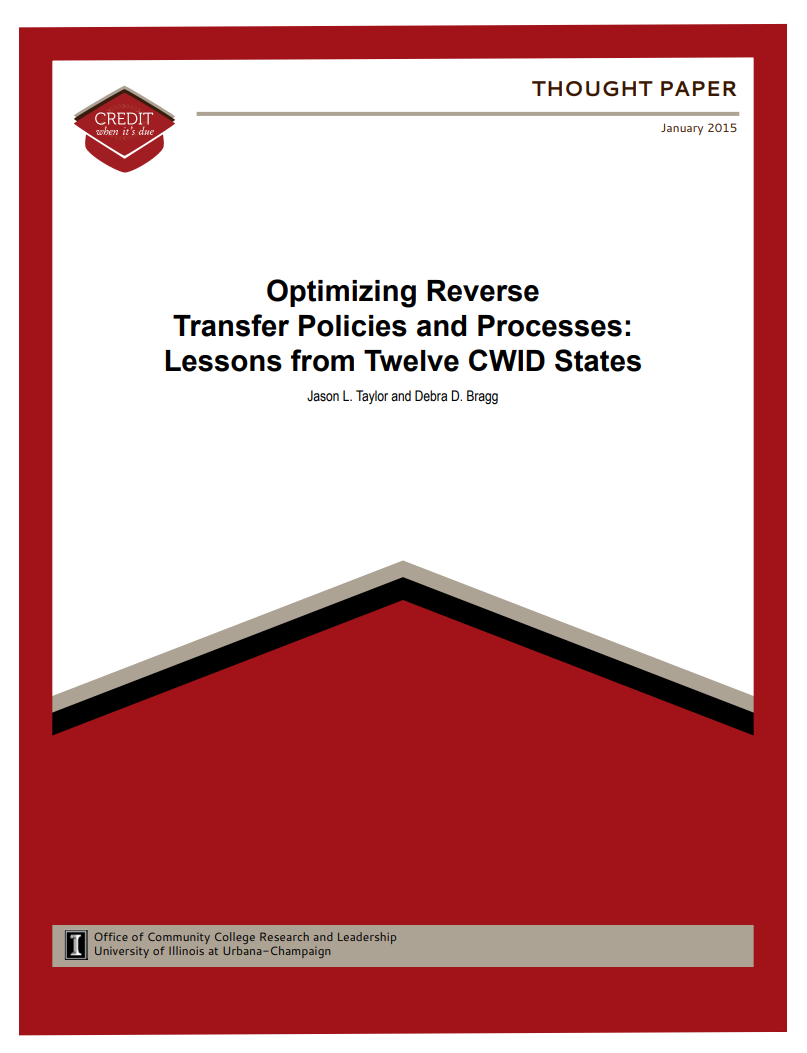Optimizing Reverse Transfer Policies and Processes: Lessons from Twelve CWID States
Author(s): Jason L. Taylor, Debra D. Bragg
Publisher: Office of Community College Research and Leadership (OORCL), University of Illinois
Year: 2015
Description
In 2012, five foundations launched the Credit When Its Due (CWID) initiative that was “designed to encourage partnerships of community colleges and universities to significantly expand programs that award associate degrees to transfer students when the student completes the requirements for the associate degree while pursuing a bachelor’s degree” (Lumina Foundation, 2012, n.p.), also known as “reverse transfer.” Initially, 12 states were funded to develop and implement these reverse transfer programs and policies, and the Office of Community College Research and Leadership (OCCRL) at the University of Illinois at Urbana-Champaign was chosen as the research partner. In late 2013, three states were added to bring the total number of states to 15. At least six additional states have legislation, pending legislation, or statewide initiatives related to reverse transfer.
This thought paper describes changes that are occurring at the state, system, and institution levels with implementation of reverse transfer in the 12 original states. Using qualitative and quantitative data collected from the CWID Implementation Study, we describe efforts related to the optimization of reverse transfer (defined below) in these 12 states. Our initial results suggest that some states are piloting reverse transfer with a limited set of public community college and university partnerships, and others are striving for system-level reforms that eventually may impact all forms of transfer. Understanding what optimization means and how it works is possible because of this variation in implementation approaches among states, and this thought paper explores how states are implementing and optimizing reverse transfer.

